My first day of birding at the 2008 Rio Grande Valley Birding Festival was pretty stupendous. Would the second day hold up? Considering that we were headed to the celebrated King Ranch, the Lone Star State’s largest ranch in Texas and a haven for birds for over a century, all signs pointed to yes. After all, while a lot of private landowners claim that their ilk are better stewards of healthy ecosystems than any government could be, few walk the walk the way the managers at King Ranch apparently do. A sublime patchwork of grassland, wetland, thornscrub, and live oak woodland makes their Norias Unit a superb habitat for a variety of coveted South Texas winter birds. And since the ranch does a brisk business in nature tours, one imagines that enlightened self-interest will keep these essential ecosystems intact! The primary target of this excursion was the cunning, clandestine Ferruginous Pygmy-Owl but we had hopes for far more than just an owl or two, particularly with Jeff and Bill among the trip leaders.
Stepping over the dainty little frogs that thronged on our sandy path, we quickly eyed expected species like Couch’s Kingbird, Green Jay, and Great Kiskadee along with the common complement of Harris’ Hawk, vultures and caracaras. Everyone was eager to pick up pygmy owl but they were slow in coming. Fortunately, the same could not be said for one of our most important secondary targets, Audubon’s Oriole. The fly in the ointment for this sighting, a lifer more many of us, was that this species seems to possess an uncanny ability to remain backlit, rendering its distinctive yellow and black markings academic.
Still, we were on the warpath for Ferruginous Pygmy-Owl. Once we got on one, we worked it for a long time, patiently waiting and calling until it gave up a glimpse. Alas, that first owl made fools of us. A second one almost did the same but couldn’t elude our sharp-eyed group. While I didn’t get photo-worthy looks, I can attest that this species is absolutely adorable, in the way that only tiny owls can be. It’s also a dangerous diurnal predator, using disproportionately large talons and ninja stealth to productive use.
One we had a pygmy-owl in the bag, we could pay attention to more frivolous fare, like the huge Texas Indigo Snake Jeff deftly wrangled out of the tall grass. You can see from the shot below how striking this snake is but you should really read Jeff’s account to see how impressive a five-and-a-half foot indigo snake really is.
Our next stop was a grassland that attracts meadowlarks and Sprague’s Pipit. We nabbed the former but found it both too wet in the aftermath of Hurricane Dolly and too early in the season to score Sprague’s, though we did get American Pipit flyovers. We also spied pleny of White-tailed Hawks. These beauteous buteos soared high above the ranch, rarely dropping down low but usually on display. What a raptor!
Excessive moisture massacred our chances at other tall grass species like LeConte’s Sparrow and Sedge Wren. The best we could do in that regard was a Sora peeping out of sight. But we did happen on plenty of waterfowl, including gadwalls, teals, shovelers, whistling ducks, coots, and both Pied-billed and Least Grebes. The latter grebe is a neotropical specialty so spotting the smallest member of the grebe family in the ABA region is a treat. It’s cute too if you’re into that sort of thing. In fact, we encountered one family with three tiny grebelets in tow, a serious Cute Overload moment.
The King Ranch really delivered fine birding. The variety of habitats support a slew of fantastic bird, invertebrates, herps, and mammals so you’re unlikely to be anything less than engaged as you travel through. Ecosystems boasting this level of biodiversity always produce a surprise or two. For some of our group, it was a Great Horned Owl, while others among us took the time to scrutinize the subtle differences between adult and juvenile Cattle Egrets.
See that brilliant Vermilion Flycatcher behind the egrets? These killers turned up fairly often but, unsurprisingly it was the first-year males, distinguished by their patchy white chest plumage, that came the closest.

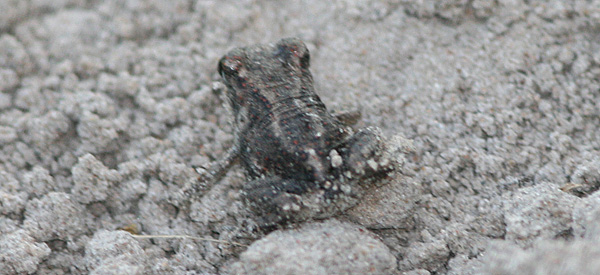
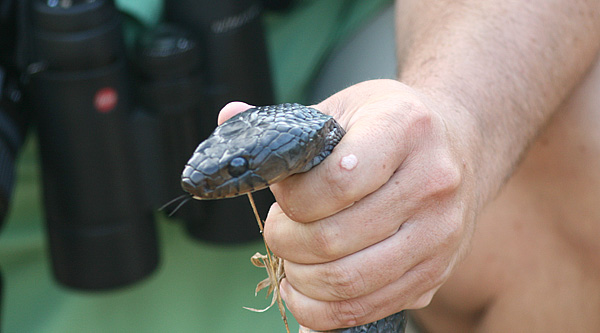
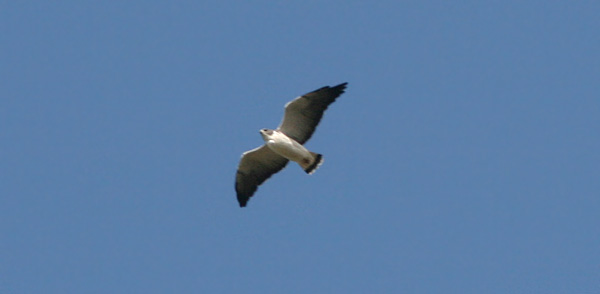
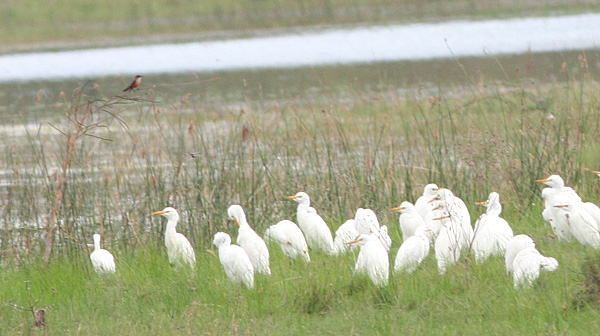
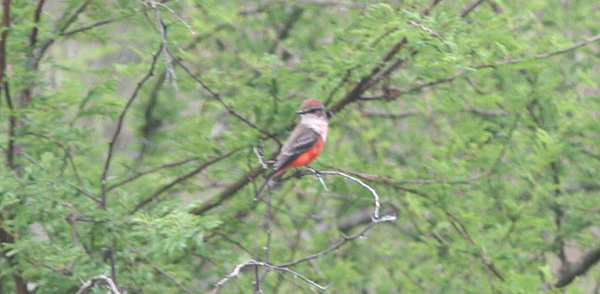










Hey Mike, it looks like you had a great time down there in Texas. Maybe the King Ranch should run classes for the Department of the Interior 😉 What a super variety of birds as well as other faire. I was wondering if they have any Burrowing Owls on the ranch?
After reading your post, I have put the King Ranch on my list of “must see”. Love the photo of the Vermillion Flycatcher too!
After that first owl played hard-to-get, I was wondering if luck just wasn’t going to be with us that day. Oh me of little faith. However, I seemed to be the last one in the group to see that first visible owl. I saw it well enough to count it, but I wasn’t satisfied. But thankfully that second one called up showed brilliantly. Well, relatively anyway.
It was indeed a great trip.
Ferr Pygmy Owl is one of the RGV specialties that I missed. We went to a different ranch (El Canelo maybe) where they have them living in their backyard. Unfortunately, it was the windiest day ever and we didn’t see them. Great sightings though! Congrats!